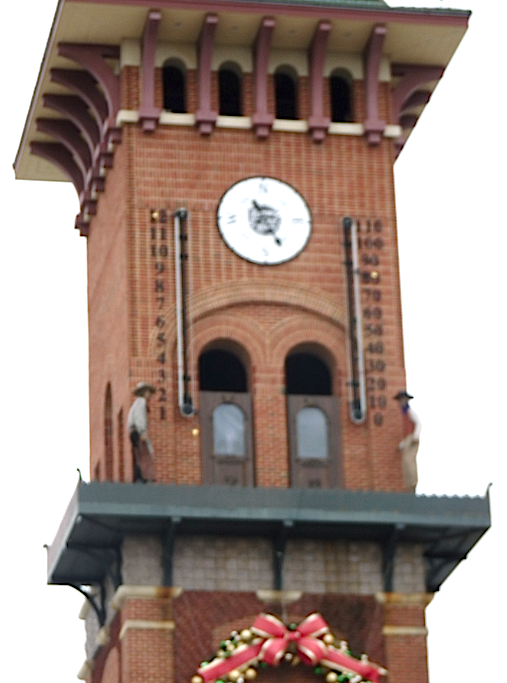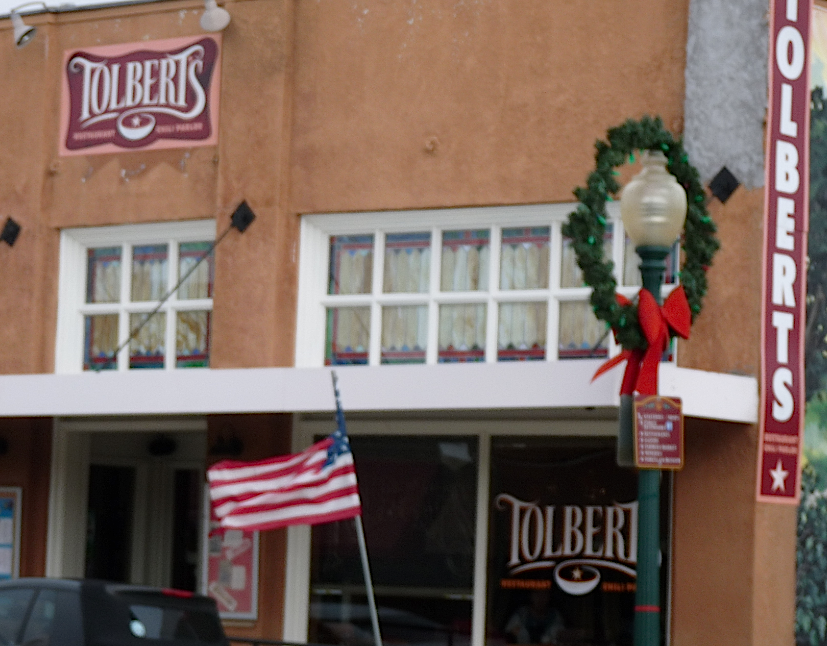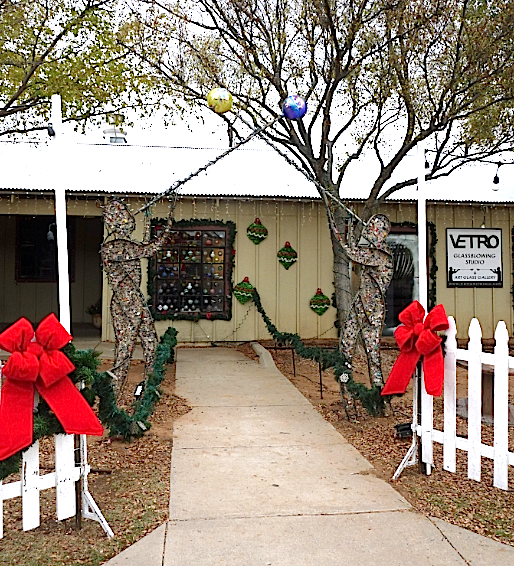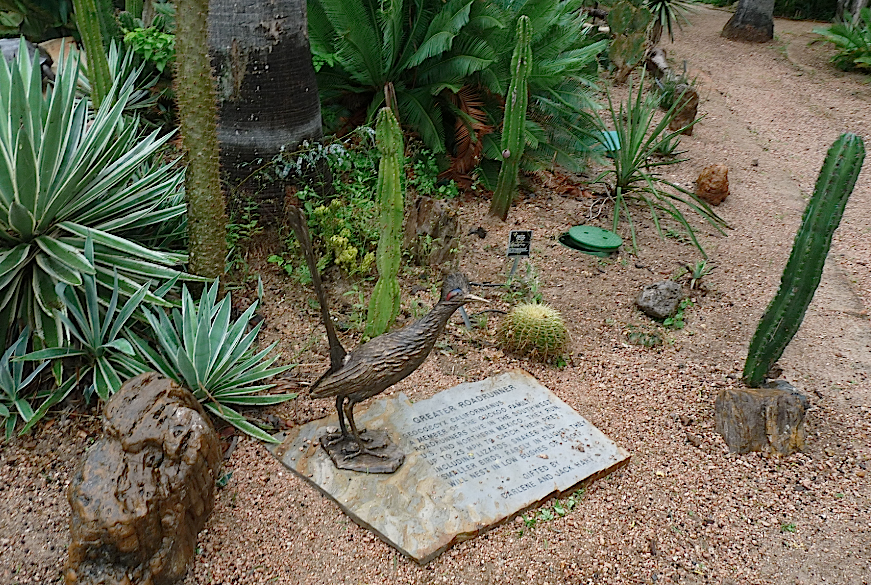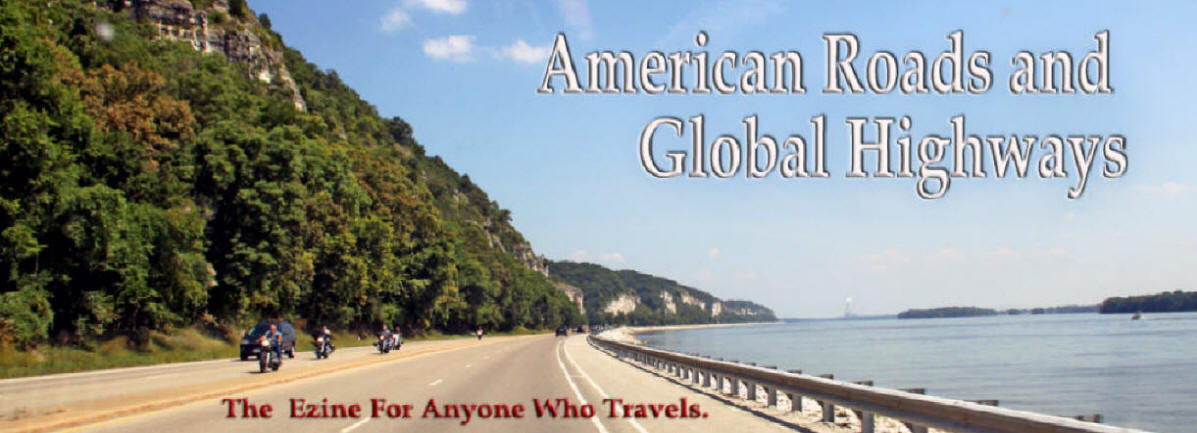
|
|
|
|
|
|
Dallas-Fort Worth International Airport (DFW) is so large that Manhattan Island would fit inside its 17,207-acres and it has its own postal zip code. Many of the thousands of people who pass through daily have long layovers and DFW offers the affordable Grapevine Visitors Shuttle service that stops at locations of interest throughout the area. Year round Grapevine, Texas is a great destination for a brief layover, extended stay or point of departure for the ultimate Texas road trips. www.grapevinetexasusa.com In 1843 Sam Houston met with
representatives of ten Indian nations at Tah-Wah-Karro
Creek. The resulting peace treaty allowed settlers into
the Grape Vine Prairie and in 1844 the city of Grapevine
was founded and named after the wild Mustang grapes that
grew in the area. The city's history is interpreted
throughout the city with markers, museums and historic
structures. In 1996 The Walking To Texas Fountain was
dedicated in Liberty Park to honor the native tribes,
who are inscribed on the monument, and the pioneers who
lived on the land.
I suggest that your first
stop be the Grapevine Information Visitor Center. The
center houses several galleries and provides
information, facilities and a WIFI charging station.
No visitor should miss the
unique Glockenspiel in the Cotton Belt Hotel Clock
Tower. Glockenspiels are known throughout Europe for
displaying both the time and an allegorical tale,
usually religious or historic. Grapevine's glockenspiel
is a slice of the West, with train robbers Nat Barrett
and Willy Majors, emerging 4 times daily. The 9-ft.
figures are best seen from the other side of Main
Street. Main Street is listed on the
National Register of Historic Places and plaques
indicate the sites and history of various events and
edifices. There are more than 80 specialty shops and
restaurants along the street so a meander and frequent
stops are called for.
Tolbert's Restaurant and
Chili Parlor is justifiably famous their Donkey Tales, 2
cheese-stuffed beef hot dogs encased in tortillas, and
Tolbert's Texas Red chili with onions, cheese, and a
serrano pepper.
www.tolbertsrestaurant.com Dino's Steak & Claw House was
once the location of First National Bank of Grapevine.
Today the restaurant offers fine dining in a graceful
setting accompanied by live music. Everything here is
outstanding. www.dinossteakandclaw.net The Palace Theater was
constructed in 1939 as a movie venue. In 2001 it
underwent a $5-million restoration and is now a
performance venue and home to the Grapevine Opry. The
holiday schedule includes classic Christmas movies and
performances.
VETRO Glassblowing Studio &
Gallery is a state-of-the-art studio that creates works
in one of the country's few air-conditioned studios.
Visitors can take classes resulting in an object they
created that they can takeaway.
www.vetroartglass.com The Grapevine Vintage
Railroad is always a hit. Victorian-style railcars
leave from the 1888 Cotton Belt Railroad Depot and
venture on several types of journeys including
sightseeing and the Jazz Wine Train. A reservation for
any experience is required. Texas Star Dinner Theater's
is an interactive mystery dinner theater experience.
Three-course meals are prepared by a chef and served
prior to the show. Guests participate in solving the
crime and there is a great deal of hilarity and snappy
dialog.
www.texasstardinnertheater.com Great Wolf Lodge, the only indoor waterpark in North Texas, has activities year round for both adults and children. There are numerous activities and it is ideally situated for touring the area. www.greatwolf.com/Grapevine_TX In April of 2004 Gaylord Texan Resort & Convention Center on Lake Grapevine opened. This 4.5-acre destination hotel is a connected series of glass-encased atriums that feature accommodations, retail, restaurants, entertainment and a Relache Spa. Outdoor activities include hiking and jogging trails, water sports and the Cowboys Golf Club. Visitors need never leave their bubble but if they choose to it is a short distance to all the other activities. www.marriott.com/hotels/travel/dalgt-gaylord-texan-resort-and-convention-center
Amarillo represents
everything you have dreamt Texas could be. It is the
city that we recognize from iconic movies, filled with
larger than life personalities and everything else from
longhorn cattle to unique arts and culture. Throughout
the city are tangible symbols of the regional spirit of
adventure and ongoing quest for the next big adventure.
Archeologists can reliably
place human habitation in the area about 11,000 years
ago. The earliest people were nomadic tribes who did not
establish farms until around 1150.The name itself,
"Texas", is the Spanish pronunciation of the Caddo
Indian word for friend, "Taysha". The first European
explorers, led by Coronado, reached the area in 1541 but
settlement did not occur until the 1880s.
Amarillo is situated in the
heart of the Texas Panhandle and became known as the
"Crossroads of the Panhandle" because of railroad and
cattle trail access and importance. The quintessential
western, "Lonesome Dove", is based on regional locations
and characters and Gus is modeled after Charles
Goodnight. Charles established the Goodnight-Loving
Trail and invented the chuck wagon.
The earliest documented
African Americans, Jerry Calloway and Matthew Hooks came
to Amarillo in 1888 and by the early 1900s there were 5
families. Joshua Deets, the African American cowboy in
Lonesome Dove is based on Bose Ikard, Goodnight's
righthand man. Upon Ikard's death in 1929 Goodnight paid
for his gravestone and on it etched, "Served with me 30
years, Fought in 21 Engagements with the Comanche and
Kiowa. Cheerful in all weathers. Never shirked a task.
Splendid behavior."
In 1892 the city was named
Amarillo, "yellow", after having previously been called
both Ragtown and Oneida. It was a prosperous cowtown
until the 20th-century when the discovery of
natural gas prompted industrial development.
The Panhandle-Plains
Historical Museum, the largest in Texas, is the best
place to obtain an overview of the region's history. The
museum interprets 14,000 years through dioramas,
artifacts and artworks. An exhibition highlight is
Pioneer Town. Visitors walk along streets of an
1890-1910 town filled with typical establishments of the
era.
www.panhandleplains.org
Charles Goodnight established
the first Panhandle Ranch, the JA Ranch, within Palo
Duro Canyon in 1876. His ranch would expand to nearly
1-million acres and contain 100,000 cattle. Palo Duro,
the second largest in the country, as carved out by the
200-mile Red River and served as the Indians winter camp
and settlement for 12,000 years. It was the site of the
last major battle of the Indian Wars.
www.tpwd.texas.gov/state-parks/palo-duro-canyon
Attractions within the park
include the Trading Post that offers food and souvenirs
and the Visitor Center. Visitors can view a one-hour
film on the history of the 90-million year old canyon
and explore several artifact filled galleries. There are
13 trails, a replica of a sod house, the outdoor drama
"Texas" and magnificent views within the canyon.
Amarillo has more than its share of world famous sites, not the least of which is the Cadillac Ranch. A quarter-mile from Route 66 stands an artwork that consists of 10 caddies planted in the ground. The cars are facing west chronological and from 1949 to 1963. The cars were placed there in 1974 and people are encouraged to add to the artwork with their own spray paint contribution. The nearest Home Depot sells more spray paint than anywhere else in country. A great photo op. www.amarillo66.com
The internationally renowned
Route 66 received its official designation in 1926 and
was designed to link cities and towns to facilitate the
transportation of goods. John Steinbeck called it "The
Mother Road" in
Grapes of Wrath in 1939 and in 1946 Nat King Cole
sang "get your kicks on route 66". Entrepreneurs were
quick to realize that a road trip required
accommodations and services and a new form of
architecture was born. By 1984 the road had been totally
supplanted by modern roads and interstate highways.
There are 178-miles of the route in Texas and 150-miles
of it are navigable. The most iconic section in Amarillo
is 6th Street.
www.rt66ofTexas.com
Bob "Crocodile" Lile is the creative mind behind "cadillite" jewelry at Lile Art Gallery. These unique pieces are handcrafted by Croc of paint chips culled from Cadillac Ranch. He is filled with stories about "America's Main Street" and time with him is time well spent. www.lileartgallery.com Los Bracero Mexican Bar and
Grill on Route 66 offers a true Route 66 experience. The
restaurant is situated in a former gas station/garage
and you are certain to meet the locals. The menu is pure
Mexican, and the food is delicious. All the dishes are
prepared fresh using authentic recipes. Route 66 ushered in a new era
filled with road trips and family vacations. Two museums
in Amarillo provide an opportunity to revel in the joys
of classic transportation.
Bill's Backyard Classics
exhibits 170 classic cars, on a rotating basis, in two
showrooms. The cars are all meticulously restored and
are in driving condition. The vehicles date from the
1920s to 2012. Highlights of the collection include Bob
Seger's 1961 Pontiac Catalina convertible and a 1928
paddy wagon complete with leg irons.
www.bbcamatx.com
Jack Sisemore's RV Museum is
housed in a structure adjacent to the oldest RV
dealership in the state. The RV's date from the 1930s
and are displayed along with objects from the era.
Exhibited RVs include the bus from the film RV a genuine
VW van from the era of peace and love and a 1942 Harley,
"the motorcycle that won the war".
www.rvmuseum.net
Wonderland is another of
Amarillo's riches. It opened in 1951 and remains
family-owned. There are 31 rides, only one is original,
including 4 steel rollercoasters. Two of the
rollercoasters are in the Hall of Fame.
The Big Texan Steak Ranch &
Microbrewery is an absolute must. The Lee family opened
the restaurant in 1960 on Route 66 near the stockyards.
It is home to the 72 oz., $72.00, 1-lb. steak dinner.
Diners who eat the steak and sides in 60-minutes eat for
free. The food is locally sourced, served family style
and the ambiance is pure Texas. It should be noted that
the current champion is a female. She ate three steaks
at one sitting in 2014. She ate the first steak in
4-minutes and 58-seconds.
www.bigtexan.com
Amarillo was once filled with
neon signs and was considered the "Best Lit City West of
the Mississippi". Some of the buildings are still lit
and the best example is the restored Paramount Theater. In Amarillo you can walk the
path followed by the Lonesome Dove characters, the
Buffalo Soldiers and Comanche chief Quanah Parker.
The Caddo Indians inhabited
Texas for more than 11,000-years before Europeans
arrived and it was their word, "tayshas", meaning
"friend", that the Spanish pronounced "tejas". It
would give rise to the name Texas. Alonso Alvarez de Pineda, in
1519, was the first documented European explorer of the
McAllen area but a formal settlement would not occur
until more than 200-years later. The land was part of a
porciones given in 1767 by Spain to Antonio Gutierrez
and Juan Antonio Villareal. Jose Gómez established the
Santa Anita Ranch in 1797 and people migrated to the
region. Gómez's great-granddaughter, Salome Ballí,
eventually inherited the land and she wed the ranch
manager, John McAllen, in 1861. The ranch became known
as the McAllen Ranch and the existing city of McAllen is
within that ranch's 160,000-acres.
www.southtexastourism.com
Alvar Núñez Cabeza de Vaca
introduced horses and cattle into Texas in 1528. By the
late 1600s vaqueros, a mixture of Spanish, Native
American, African American and criollo descent, were the
acknowledged ranching experts and the first "cowboys".
Most of the words we associate with cow herding are
Spanish and African in origin. Vaqueros usually sold
their services independently and they were often
recruited from Mexico for their skills. They owned their
own horse and ropes. Black cowboys were always an
integral part of the southwestern ranch culture.
Estimates put their numbers at up to 9,000, roughly 25%
of cowboys. Many were fugitive slaves and later former
enslaved men seeking a new life.
The ownership of the land
between the Nueces River and the Rio Grande River was a
contested border between Mexico and the US. The border
eventually became the Rio Grande and the "Nueces Strip"
became a line on the Underground Railroad. Freedom
seeking slaves from Texas and Louisiana used it to
escape to Mexico because Mexico's mulatto president
Vicente Guerrero abolished slavery in 1829.
Few stories of those who hid
fugitives are documented but that of the Jacksons is.
Nathaniel Jackson was an Alabama plantation owner who
wed, Matilda Hicks, one of his slaves. In the 1850s he
freed his slaves and he and his family moved to southern
Texas. They were known to have hidden escapees and to
have smuggled them to freedom in Mexico. In 1866 the Army
Reorganization Act facilitated the organization of 2
cavalry and 4 infantry regiments of African Americans.
The units were segregated and would become known as
Buffalo Soldiers. They were dispatched across Texas to
build forts, accompany wagon trains and stagecoaches,
apprehend fugitives and subdue enemies. The $45-million McAllen
Performing Arts Center's design reflects the
environment. A bronze sculpture, "The Vaquero of Nuevo
Santander", stands on the exterior and pays homage to
the Tejano cattlemen of the 1700s.
The heritage of the lower Rio
Grande region, from prehistoric beasts to current
culture, is recounted in the Museum of South Texas
History. Tours begin in the Spanish Colonial Revival
Grand Lobby with decorative tiles, ironwork and mesquite
doors. The history is presented chronologically through
dioramas, documents, artifacts and audio.
www.mosthistory.org
Forty years ago the
International Museum of Art & Science was founded. The
museum combines bilingual hands-on science exhibits with
a 4,5000 object folk-art and textile collection dating
from the 1500s, the largest collection of Mexican folk
art in the nation.
www.mcallenart.com McAllen Public Library is the largest single story library in the country. The building is a redesigned Wal-Mart filled with state-of-the-art technology and community-related services. Self-guided tours are offered. www.mcallenlibrary.net McAllen is a significant destination for birders from around the world. They flock here to witness the great migration. Nearly 500 bird species have been recorded here, many unique to the region. The city is part of the Texas Tropical Trail Region that encompasses nine locations along 120-miles of river road. More than 75% of the nation's bird species can be seen there. www.texastropicaltrail.com
The World Birding Center is
part of the Quinta Mazatlan Historic House complex that
features the 1935 adobe home, nature trail, 15-acres of
bird habitat, sculptures and conference center. The
historic home was built using 10,000 adobe bricks and
government certified Televera Tile. Tours of the house
and walks along the trails are spectacular.
www.quintamazatlan.com McAllen has a unique vibe
that is a distinct mixture of the ethnicities that
impacted on its history and one of its most potent
exemplifiers is its cuisine. Visitors can opt for
traditional Mexican and Tex-Mex dishes at a variety of
restaurants. Authentic Mexican food is believed to have
its roots in Mayan culture. Tex-Mex is regional and is a
blending of both Spanish and Native American cuisine.
Tamales, staples of the area, are documented as early as the pre-Columbian Era. As women accompanied men into battle as cooks and the need for portable foods became apparent leading to the importance of the tamale. Delia's Tamales are considered the best in Texas. Delia began approximately 30-years ago selling her fresh tamales door to door. In 1999 she opened the first of three restaurants in McAllen. Her tamales can now be ordered online. www.deliastamales.com Costas Messa is renowned for
serving authentic Mexican cuisine.
www.costamessargv.com Bodega Tavern & Kitchen showcases regional Texas cuisine. The paella here is excellent. www.bodegamcallen.com Cambria Hotel & Suites
McAllen Convention Center is centrally located and
within walking distance of many attractions. It features
regional art and all the amenities necessary to make
your stay memorable.
www.cambriamcallen.com The past is alive in McAllen
and the cultural blend and diversity is unique and
evident all around you. |
Connect with us on:
American Roads and | ||||||||
|
Public Disclosure--
Please Read I recently learned of a FTC law requiring web sites to let their readers know if any of the stories are "sponsored" or compensated. American Roads and Global Highways' feature writers are professional travel writers. As such we are frequently invited on press trips, also called fam trips. Most of the articles here are results of these trips. On these trips most of our lodging, dining, admissions fees and often plane fare are covered by the city or firm hosting the trip. It is an opportunity to visit places we might not otherwise be able to visit and bring you a great story. However, no one tells us what to write about those places. All opinions are 100% those of the author of that feature column. |
|||||||||
|
Privacy Policy/ Archives /
Contributors /
Subscribe to
American Roads Books by
Kathleen Walls /
Contact /
Sponsor or Advertise/ American Roads & Global Highways Home Page
|

